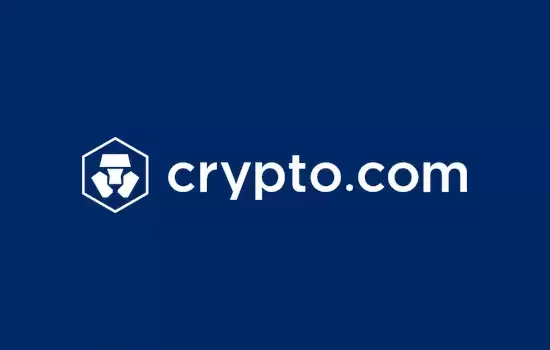 |
|
 |
|
 |
|
 |
|
 |
|
 |
|
 |
|
 |
|
 |
|
 |
|
 |
|
 |
|
 |
|
 |
|
 |
|
この急増により、総平均生産コストはビットコインあたり137,018ドルになり、以前の期間よりも大幅に高くなります。

The average cost to mine a single Bitcoin surged by 47% in the fourth quarter of 2024, reaching $137,018, according to a new report by CoinShares. This installment of the CoinShares industry report tracks the average mining costs among publicly listed companies, which saw average Q4 cash operating costs rise to $82,162. When including non-cash expenses, such as depreciation of mining equipment, the total production cost arrived at $137,018 per Bitcoin. Excluding Hut 8, which reported a large tax liability related to unrealized gains, the average cash operating cost was $75,767.
Coinsharesの新しいレポートによると、2024年の第4四半期に1回のビットコインをマイニングするための平均コストは47%増加し、137,018ドルに達しました。 Coinshares Industry Reportのこの分割払いは、公的に上場した企業の平均採掘コストを追跡しており、平均第4現金運用コストは82,162ドルに上昇しました。鉱業機器の減価償却などの非現金費用を含める場合、総生産コストはビットコインあたり137,018ドルに達しました。未実現の利益に関連する大規模な納税義務を報告したHUT 8を除くと、平均現金運用コストは75,767ドルでした。
The report notes that several factors contributed to the increase in mining costs. The deployment of faster hardware, which is essential for maintaining competitive mining operations, has driven up expenses. Additionally, competition within the mining sector is heating up, which, combined with volatile market prices, has pushed up the overall cost of production. Finally, rapid technological advancements in mining hardware mean that ASIC miners are becoming obsolete faster, leading to accelerated depreciation and higher non-cash expenses.
報告書は、いくつかの要因が採掘コストの増加に寄与したことを指摘しています。競争力のある採掘操作を維持するために不可欠な高速なハードウェアの展開は、費用を押し上げました。さらに、鉱業部門内の競争は激化しており、これは不安定な市場価格と組み合わせて、生産の全体的なコストを押し上げました。最後に、マイニングハードウェアの急速な技術の進歩により、ASICマイナーはより速く廃止され、減価償却費と非現金費用の増加につながることを意味します。
For instance, Hut 8 encountered the highest unit costs in the dataset due to a massive deferred tax liability. The company also faced elevated interest expenses linked to its credit facilities, pushing the total per-Bitcoin cost beyond $281,000. To reduce these costs, Hut 8 is pledging 968 BTC to finance 30,000 Antminer S21+ ASICs, aiming to increase its self-mining hash rate and improve its overall efficiency.
たとえば、Hut 8は、延期された税責任のために、データセットで最高のユニットコストに遭遇しました。同社はまた、クレジット施設に関連する利息費用の上昇に直面し、ビットコインあたりの合計コストを281,000ドルを超えて推進しています。これらのコストを削減するために、Hut 8は968 BTCに30,000のAntminer S21+ ASICの資金調達を誓約し、自己採用ハッシュレートを増やし、全体的な効率を向上させることを目指しています。
Despite the widespread increase in mining costs, some companies were able to decrease their per-Bitcoin production costs. For example, Iren managed to cut its electricity costs at the Childress facility by switching to spot pricing, reducing electricity costs per Bitcoin by 39%.
採掘コストが広く増加しているにもかかわらず、一部の企業はビットコインあたりの生産コストを削減することができました。たとえば、アイレンは、スポット価格設定に切り替えて、ビットコインあたりの電力コストを39%削減することにより、Childress施設での電力コストを削減することができました。
Other companies, such as Cormint, were able to lower total mining costs by 44% in Q4, largely due to a decrease in power prices to 1.8¢ per kilowatt-hour. These examples show that while the industry faces rising input costs, some players are still finding ways to improve efficiency and profitability.
Cormintなどの他の企業は、第4四半期の総採掘コストを44%削減することができました。これは、主に電力価格が1キロワット時あたり1.8セントに減少したためです。これらの例は、業界が投入コストの上昇に直面している一方で、一部のプレーヤーはまだ効率と収益性を改善する方法を見つけていることを示しています。
Electricity remains the largest direct cost in Bitcoin mining, as miners continue to rely heavily on power-hungry ASIC machines to perform calculations. However, non-cash expenses, such as depreciation and amortization, are also significant contributors to the overall cost structure. This shift highlights the importance of maintaining high operational uptime and upgrading hardware efficiently to ensure that miners can stay competitive.
鉱山労働者が電力に飢えたASICマシンに大きく依存して計算を行うため、電気はビットコインマイニングで最大の直接コストのままです。ただし、減価償却や償却などの非現金費用も、全体的なコスト構造に大きく貢献しています。このシフトは、鉱山労働者が競争力を維持できるように、高い運用上の稼働時間を維持し、ハードウェアを効率的にアップグレードすることの重要性を強調しています。
CoinShares’ data shows that despite these rising costs, most miners were still able to operate profitably in Q4 2024, with Bitcoin’s price remaining relatively stable at around $82,000. However, the second quarter of 2025 could bring more challenges for miners. Tariffs on imported rigs from China and Malaysia are expected to increase by 24% to 54%, which will likely push up breakeven costs for miners who rely on imported equipment.
Coinsharesのデータは、これらのコストの上昇にもかかわらず、ほとんどの鉱山労働者が2024年第4四半期に収益性を高め、ビットコインの価格は約82,000ドルで比較的安定したままであることを示しています。ただし、2025年の第2四半期は、鉱夫にさらに課題をもたらす可能性があります。中国とマレーシアからの輸入リグの関税は、24%から54%増加すると予想されます。
The broader outlook for Bitcoin mining appears bleak, with the industry facing multiple headwinds. In addition to the pressing issues of hardware costs and electricity prices, mining companies are also facing growing tax liabilities and valuation multiples for mining companies are compressing, signaling investor concerns about the competitive nature of the sector.
ビットコインマイニングの幅広い見通しは暗いようで、業界は複数の逆風に直面しています。ハードウェアのコストと電力価格の差し迫った問題に加えて、鉱業会社は税金の責任の増加に直面しており、鉱業会社の評価倍が圧縮されており、セクターの競争力に関する投資家の懸念を知らせています。
To diversify revenue streams beyond Bitcoin block rewards and transaction fees, some miners are investing in data center infrastructure and high-performance computing (HPC). At the same time, the industry continues to make strides in hardware efficiency, with new ASIC models now averaging 20 watts per terahash (W/TH), a significant improvement from the 100 W/TH average in 2018. These advances are helping to keep the total energy consumption of the Bitcoin network stable, even as the hash rate continues to rise.
ビットコインブロックの報酬と取引手数料を超えて収益源を多様化するために、一部の鉱夫はデータセンターインフラストラクチャと高性能コンピューティング(HPC)に投資しています。同時に、業界はハードウェア効率の進歩を続けており、新しいASICモデルは現在平均20ワット(w/th)であり、2018年の平均100 w/thの平均から大幅に改善されています。これらの進歩は、ハッシュレートが上昇し続けていても、ビットコインネットワークの総消費量を安定させ続けるのに役立ちます。
CoinShares predicts that the Bitcoin network will cross the one zetahash per second (ZH/s) threshold by mid-2025. However, the cost pressures faced by miners are unlikely to abate, and the industry will need to adapt to maintain profitability in an increasingly competitive environment.
Coinsharesは、ビットコインネットワークが2025年半ばまでに1秒あたりのゼタハシュ(Zh/s)しきい値を超えると予測しています。ただし、鉱夫が直面するコストの圧力は衰える可能性は低く、業界はますます競争の激しい環境で収益性を維持するために適応する必要があります。
免責事項:info@kdj.com
提供される情報は取引に関するアドバイスではありません。 kdj.com は、この記事で提供される情報に基づいて行われた投資に対して一切の責任を負いません。暗号通貨は変動性が高いため、十分な調査を行った上で慎重に投資することを強くお勧めします。
このウェブサイトで使用されているコンテンツが著作権を侵害していると思われる場合は、直ちに当社 (info@kdj.com) までご連絡ください。速やかに削除させていただきます。
-

-

-

- Shiba Inu(Shib)は再び熱くなります
- 2025-04-27 20:40:13
- 数ヶ月の静かな取引の後、人気のミームコインは、毎日と時間ごとのチャートの両方で強気の信号をフラッシュしています。
-

-

-

-

-

- Shiba Inu(Shib)は世界的な感覚になりました
- 2025-04-27 20:30:12
- Shiba Inu(Shib)は、前回のブルランでグローバルな感覚になり、微小投資を大規模な財産に変えました。
-





























































